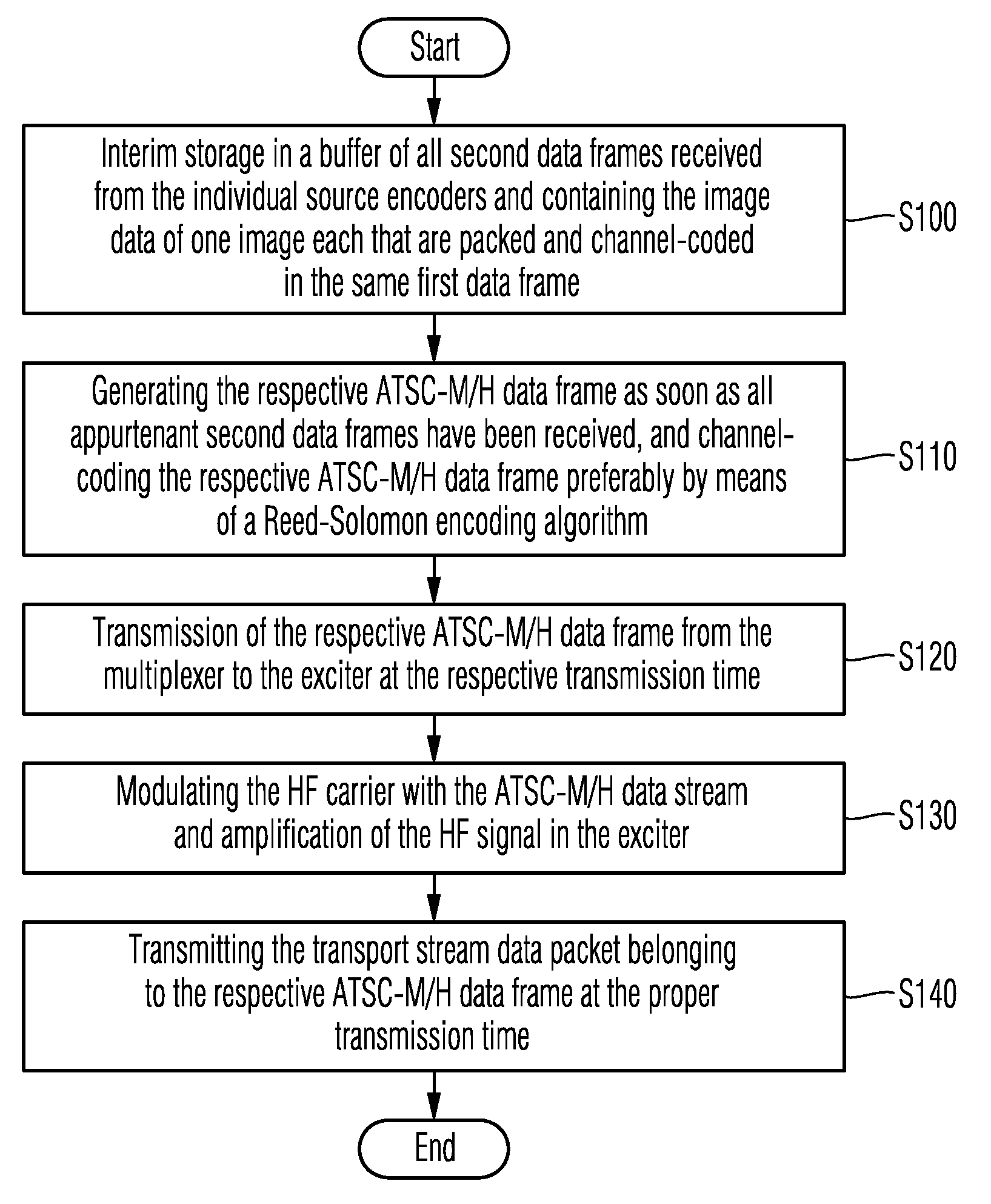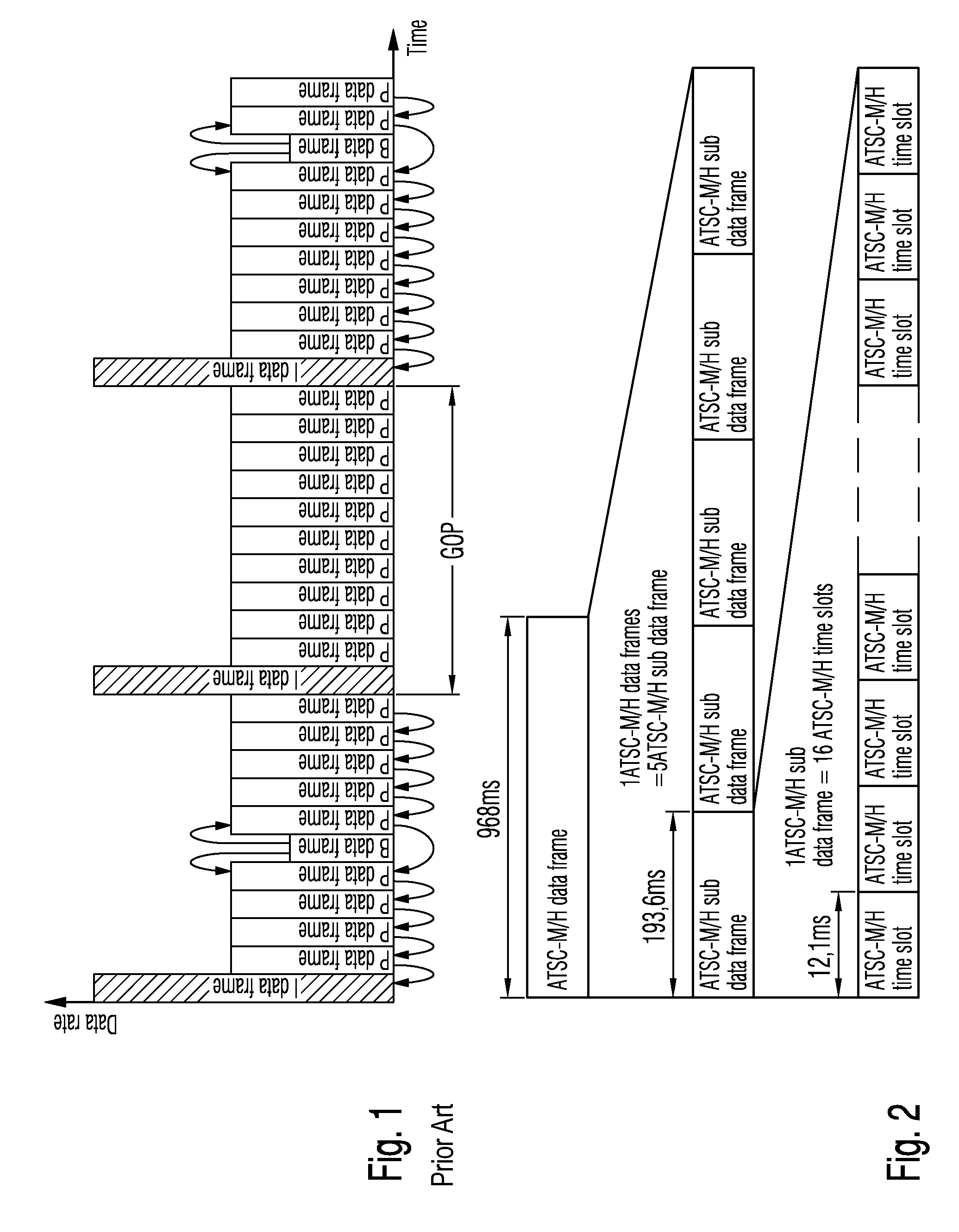Methods and Apparatus for Generating a Transport Data Stream with Image Data
a technology of image data and transport data, applied in the field of generating a transport data stream with picture data, can solve the problem of reducing the entry time of a digital television program, and achieve the effect of reducing the entry tim
- Summary
- Abstract
- Description
- Claims
- Application Information
AI Technical Summary
Benefits of technology
Problems solved by technology
Method used
Image
Examples
Embodiment Construction
[0048]Example embodiments of processes and devices for generating a transport data stream for digital TV will now be described with reference to FIGS. 12 and 13 and FIGS. 11A and 11B.
[0049]In step S10, a picture sequence s1, s2, . . . , sn is recorded for each program 1, 2, . . . , n including individual digital images having a specific image repetition frequency. In step S20, a data stream d1, d2, . . . , dn with successive source-encoded second data frames is generated from an image sequence associated with a respective program by a respective source encoder 11, 12, . . . , 1n shown in FIGS. 11A or, respectively, 11B. Each second data frame, i.e. each P-, B- or I-frame, contains the image data of an image of the recorded image sequence. For the source encoding, a common image encoding or image compression algorithm such as the MPEG4-10 H.264 / AVC video encoding / video compression algorithm. As shown in FIG. 1, this video encoding algorithm generates a data stream with a periodically...
PUM
 Login to View More
Login to View More Abstract
Description
Claims
Application Information
 Login to View More
Login to View More - R&D
- Intellectual Property
- Life Sciences
- Materials
- Tech Scout
- Unparalleled Data Quality
- Higher Quality Content
- 60% Fewer Hallucinations
Browse by: Latest US Patents, China's latest patents, Technical Efficacy Thesaurus, Application Domain, Technology Topic, Popular Technical Reports.
© 2025 PatSnap. All rights reserved.Legal|Privacy policy|Modern Slavery Act Transparency Statement|Sitemap|About US| Contact US: help@patsnap.com



